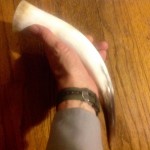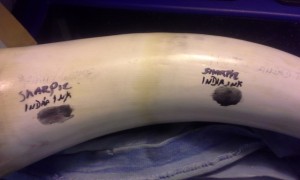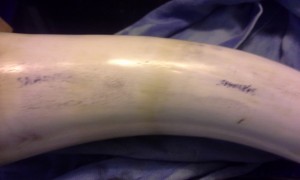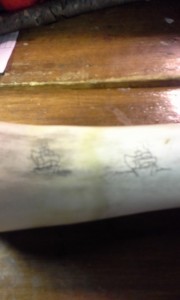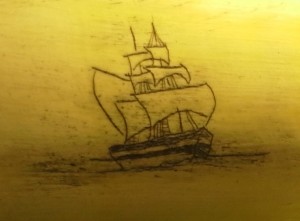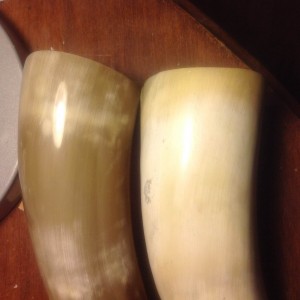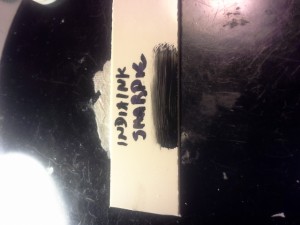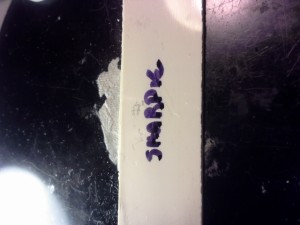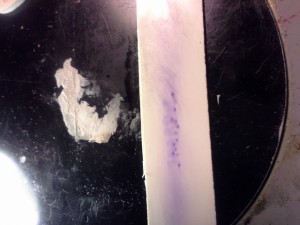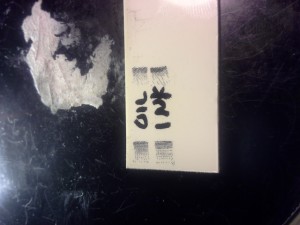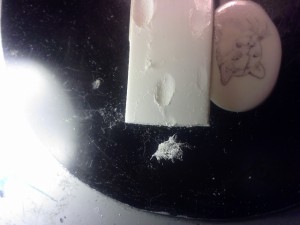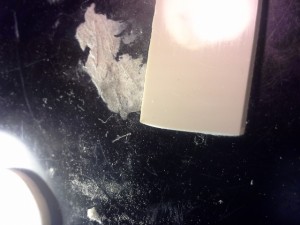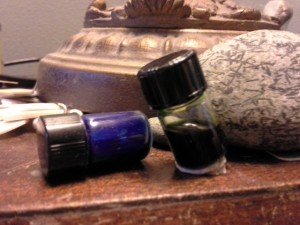Originally Posted in the Scrimshaw.com Newsletter 2014-09-14
Corian is a material most often used for countertops and sink tops made by DuPont.
The material is an acrylic polymer mixed with alumina trihydrate (ATH). ATH is suspended throughout the material giving it a uniform color. They are able to create patterns as well, from a pebble-like surface to granular in appearance.
Being a stain and abrasion resistant material, it offers benefits and challenges to scrimshanders.
Corian polishes to a high lustre with progressive sanding and polishing and you can create an almost mirror-like finish if you take the time (see notes at the bottom for a link to polishing pads that go progressively to 12,000 grit).
Finding Samples of Corian
Samples are often available at big-box stores such as Home Depot and Lowes in the states, but they don’t just hand out free samples, you have to have a genuine interest in the material to make it worth their time. If you are or have a larger project in mind, you may be able to ask for some 2″ x 2″ blocks of the type you intend to scrimshaw on and they may give them to you. If you really just want some of the material for scrimshaw and don’t want to “shuck and jive” the sales person there are a couple of other options:
- You can find a place that makes custom counter tops in your area and see if they either have samples or scraps they’re willing to part with (otherwise the waste material goes into landfills)
- You can visit Dupont at http://www.surfaces.dupont.com/ and navigate to the place that allows you to get samples
- You can purchase a sheet of corian from https://www.inventables.com/technologies/white-corian for about $27 as of the time of this writing. We’d recommend going with the ¼” unless you’re making knife handles or pens.
- Look on eBay – search for corian ¼”
There are several scrimshaw artists that are already using corian for their art, including:
Nick Finocchio (https://www.etsy.com/shop/ScrimshawEverything),
Dmitri Burakov (https://www.etsy.com/people/BDSart?ref=owner_profile_leftnav),
Katherine Plumer (http://www.katherineplumer.com/scrimshaw/closeups/fine_art/jessie.html)
and others.
Pigment Tests
We sanded then polished our sample with 600 grit, 1000 grit, 2000 grit sandpapers then polished it with the HUT PPP wax polish and let it sit for one day. Having misplaced the Sharpie pen (which I recall does stain the material), we instead used India ink, an Aquarelle pencil and oil paint. All wiped off cleanly.
Stipple and Scratch Tests
For the stipple and scratch tests, we used our favorite Coulter tungsten scribe, and lightly stippled and scratched the surface. We found the material tends to “dust” more than crater with a light touch, and with the scratch tests it once again “dusts” rather than curl or create “rows and furrows” like some of the softer materials. Still the material seems softer than casein or ivory, probably due to the physical makeup of powdered ATH suspended in acrylic.
After hastening the drying time slightly with a blow dryer (the oil paint was still wet) we carefully wiped the sample away.
India ink is the clear winner here, the aquarelle pencil tended to ride above the scratches, though held well in the stipples and the oil paint wiped out of the stipples and scratches fairly easily, leaving little pigment.
A Tip from One of Our Readers:
“Hi Andrew,
I was reading with great interest on how to seal the items you sent me.
I remembered that I used a similar process when I was turning wood and pens. Whenever I found a soft spot on antler or wood, I would fill it with a thin glue and use an accelerator to harden it and continue cutting. I used some of this thin glue on one of them, let it soak in good and used the accelerator to harden the glue and then sanded it down up to 12,000 grit. It looks great and will be ready when I get a little better at scrimming.
Here is a site with some info on the glue:
http://www.woodcraft.com/category/3/1005233/1001221/Glue%20and%20Glue%20Accessories.aspx
As I said, this was just a thought I came up with.
Have a wonderful day.
George Hester – Newbie but getting better”
Thanks again George, we’ll have to try the accelerator on some antler or bone the next time we get a chance.
Found another use for “Poster Putty”. We’ve been using it to hold scrimshaw material in place as we scrim, but when it comes to inking the little vials I like to mix them in often end up sideways (which is why I’ve been banished from the kitchen table for all things non-food). A small dab of poster putty will hold the vial or anything else spillable fast, even if you bump into it. Available at most pharmacies and at Amazon.com.

You can sign up for the newsletter for free to get the latest tips, techniques and information by clicking on the link in the upper right of this page and entering your name and email.
